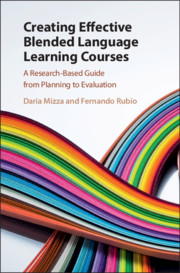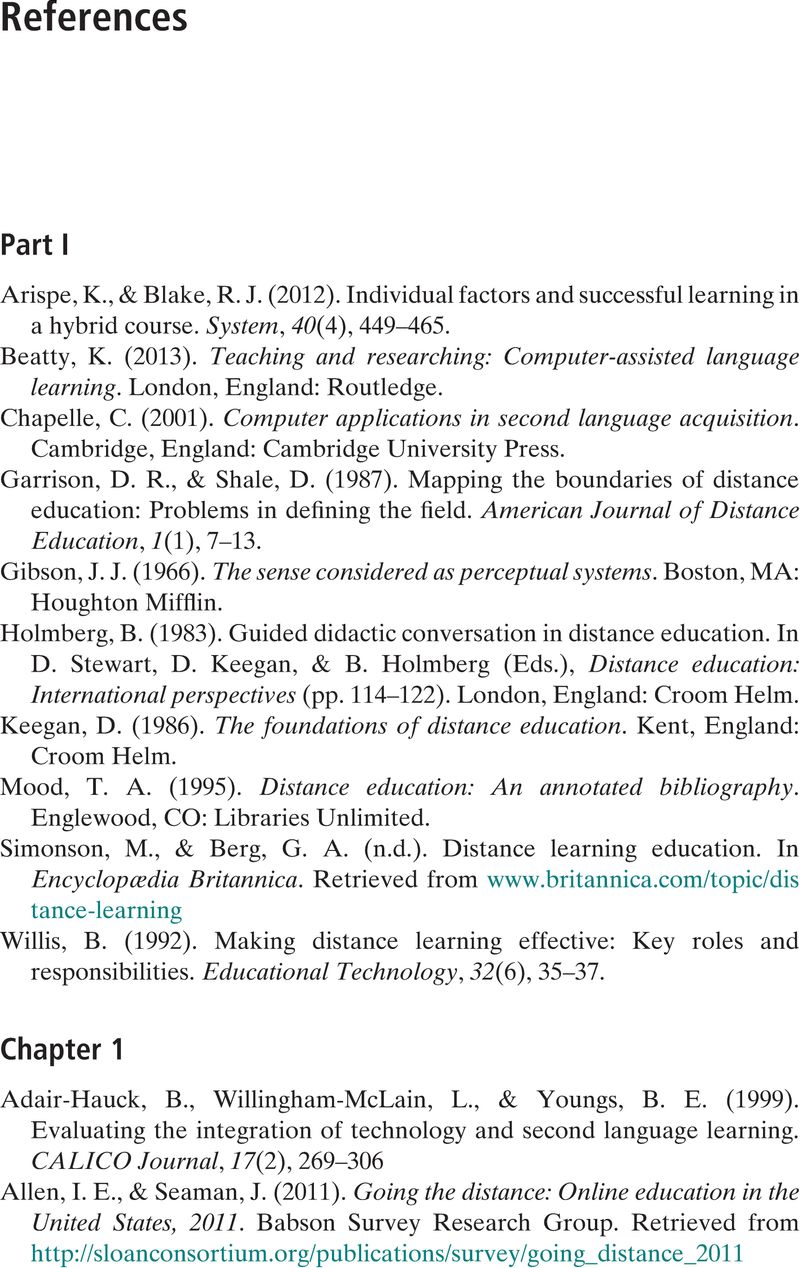 Creating Effective Blended Language Learning Courses
Creating Effective Blended Language Learning Courses Book contents
- Creating Effective Blended Language Learning Courses
- Creating Effective Blended Language Learning Courses
- Copyright page
- Contents
- Figures
- Tables
- Author Biographies
- Preface
- Acknowledgments
- Guide to Book Resources and Activities
- Part I Theoretical Background
- Part II Route, Process, and Structure
- Part III The BLL Development Framework
- References
- Index
- References
References
Published online by Cambridge University Press: 18 September 2020
- Creating Effective Blended Language Learning Courses
- Creating Effective Blended Language Learning Courses
- Copyright page
- Contents
- Figures
- Tables
- Author Biographies
- Preface
- Acknowledgments
- Guide to Book Resources and Activities
- Part I Theoretical Background
- Part II Route, Process, and Structure
- Part III The BLL Development Framework
- References
- Index
- References
Summary

- Type
- Chapter
- Information
- Creating Effective Blended Language Learning CoursesA Research-Based Guide from Planning to Evaluation, pp. 242 - 280Publisher: Cambridge University PressPrint publication year: 2020


